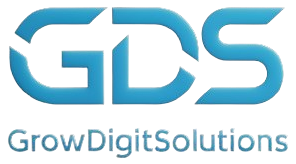Introduction
Search Engine Optimization (SEO) is a crucial component of any successful online marketing strategy. It involves optimizing your website to rank higher in search engine results pages (SERPs), thereby increasing your website’s visibility and attracting more organic traffic. In this guide, we’ll explore the fundamentals of SEO and explain why it’s essential for your business.
What is SEO?
SEO is the practice of enhancing a website’s visibility on search engines like Google. It involves various strategies and techniques designed to improve a site’s ranking for specific keywords and phrases related to its content.
Importance of SEO
Increased Visibility:
Higher rankings on SERPs lead to increased visibility for your website. This visibility can drive more traffic to your site, potentially leading to more conversions and sales.
Cost-Effective Marketing:
Unlike paid advertising, SEO focuses on organic traffic, which doesn’t require a direct payment for each visitor. This makes SEO a cost-effective long-term strategy.
Builds Credibility and Trust:
Websites that rank high on search engines are often perceived as more credible and trustworthy by users. A strong SEO strategy can help build your brand’s authority.
Improves User Experience:
Good SEO practices, such as optimizing page load speed and mobile-friendliness, enhance the user experience on your site, leading to higher engagement and retention rates.
Competitive Advantage:
Implementing effective SEO strategies can help you stay ahead of your competitors who may be targeting the same keywords and audience.
Key Components of SEO
- Keyword Research and Optimization
- Conduct keyword research to identify terms your target audience is searching for.
- Use tools like Google Keyword Planner, Ahrefs, or SEMrush to find relevant keywords.
- Optimize your content by naturally incorporating these keywords into your titles, headers, and body text.
- On-Page SEO
- Title Tags: Ensure your title tags are descriptive and include your primary keyword.
- Meta Descriptions: Write compelling meta descriptions that encourage clicks and include relevant keywords.
- Headers: Use header tags (H1, H2, H3) to structure your content and make it easier to read.
- URL Structure: Create clean and descriptive URLs that reflect the content of the page.
- Off-Page SEO
- Backlinks: Acquire high-quality backlinks from reputable websites to boost your site’s authority.
- Social Signals: Engage on social media platforms to increase your content’s visibility and shareability.
- Technical SEO
- Site Speed: Optimize your website’s load time by compressing images and leveraging browser caching.
- Mobile Optimization: Ensure your website is mobile-friendly and offers a seamless experience across devices.
- Sitemap and Robots.txt: Create and submit a sitemap to search engines, and use a robots.txt file to control which pages are crawled.
- Content Creation
- Produce high-quality, relevant content that provides value to your audience.
- Focus on creating evergreen content that remains relevant over time.
- Incorporate multimedia elements like images, videos, and infographics to enhance engagement.
Conclusion
SEO is a powerful tool that can significantly impact your online presence and business success. By understanding and implementing the fundamentals of SEO, you can improve your website’s visibility, attract more organic traffic, and ultimately drive growth. Stay tuned for more in-depth guides on specific SEO strategies and techniques.

